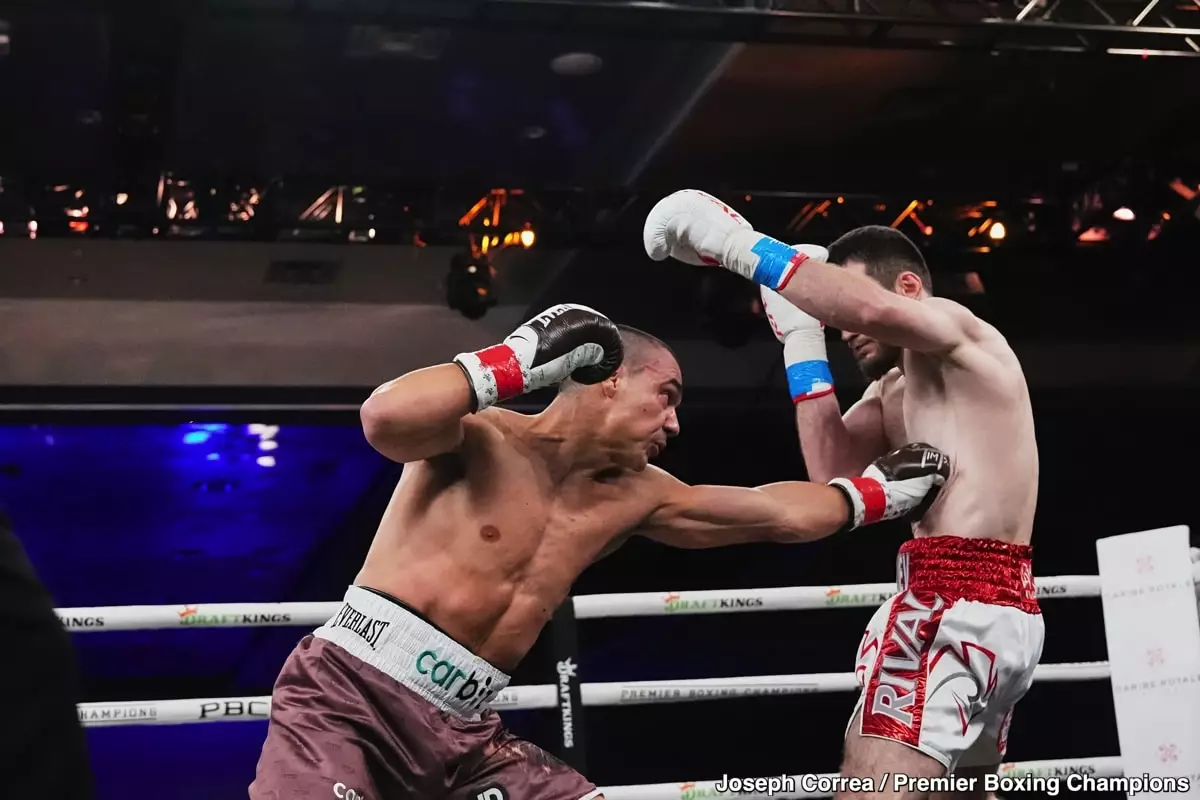In the high-stakes world of boxing, the choices made by promoters, fighters, and coaches can often spell the difference between victory and defeat. Recent events surrounding Tim Tszyu’s loss to Bakhram Murtazaliev serve as a timely reminder of how critical matchmaking can be. As seasoned commentator and former champion Sergio Mora pointed out, Tszyu’s third-round TKO loss was not merely a mark against his skills but also a result of what many are calling “bad matchmaking.” This analysis delves into this premise, examining the broader implications of poor strategic decisions in the sport.
Tim Tszyu, boasting a record of 24-2 (17 KOs), had recently suffered a disheartening split decision loss to Sebastian Fundora. This defeat undoubtedly left a mental toll on the Australian boxer, one that many experts believed could require a careful recalibration before stepping back into the ring. However, instead of allowing time to recuperate or returning with a less intimidating opponent, Tszyu faced Murtazaliev, an undefeated fighter with a record of 23-0 (17 KOs). This decision raised eyebrows and raised serious questions about strategic planning in his camp.
Mora’s perspective emphasizes that entering the ring against a formidable opponent like Murtazaliev so shortly after a difficult loss was not wise. Tszyu attempted to regain his footing in the sport, yet by challenging a lesser-known, yet dangerous champion, he inadvertently pushed himself further from reviving his career trajectory. The choice to fight Murtazaliev highlights a critical point in Tszyu’s journey: the need for well-calibrated matchups to rebuild competitive momentum.
Boxing is a sport often romanticized for its daring fighters willing to take risks. The narrative typically lauds those who step into the ring with dangerous opponents. Unfortunately, while this storyline might appeal to fans and commentators, it isn’t always beneficial for a boxer’s career trajectory. Thus, Tszyu’s situation evokes a critical dialogue about whether the courage to face tougher opponents should ever jeopardize a boxer’s prospects for growth.
In doing so, Mora’s commentary stirred a controversy. While he advocated for a more cautious approach, critics argued that this “play-it-safe” mentality hampers the sport’s growth, suggesting that risk is essential for a sport that aspires to reach the same popularity as the NBA or NFL. If promoters and boxers shy away from challenging fights, it creates a stagnation that robs the sport of the very excitement that draws fans to it.
Another layer to this discussion is the danger of “cherry-picking” fights. Mora’s disdain for what he perceives as suboptimal choices echoes the frustrations of many boxing enthusiasts who want their fighters to embrace competition based on merit rather than safety. Boxing’s decline in mainstream status can be partially attributed to a recurring trend where less challenging opponents become the focus, leading to matchups that fail to ignite spectator interest.
Tszyu’s attempt to use a fight with Murtazaliev as leverage in pursuit of bigger names like Terence Crawford exemplifies this miscalculation. While the intention behind such a strategy is understandable, it raises concerns over whether the risk outweighs the potential benefits. Could the clash with Murtazaliev have primarily been a stepping stone, or rather just a miscalculated gamble?
Ultimately, the discussion about Tim Tszyu’s unfortunate matchup serves as an important call for reflection within the world of boxing. Fighters and their teams must critically evaluate the implications of their choices—not just for immediate career outcomes but for long-term viability in a competitive landscape. As the sport continues to grapple with challenges of visibility and relevance, embracing the spirit of competition while maintaining a focus on sensible matchmaking strategies will be pivotal in shaping its future.
While opinions on Mora’s comments may vary, they undeniably contribute to an ongoing conversation about how the sport can evolve. The boxing community must balance the thrill of risky confrontations with the prudent navigation of a fighter’s career arc, ensuring that matchups build rather than fracture the aspirations that ring warriors hold dear.

